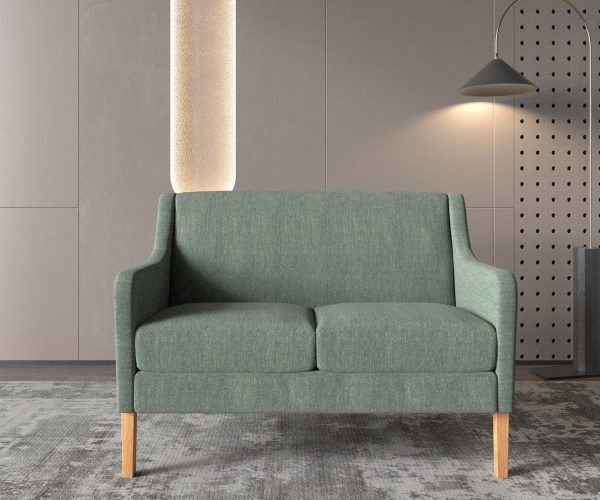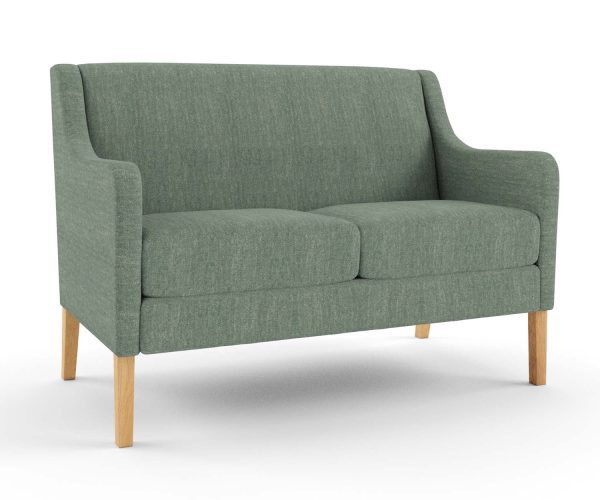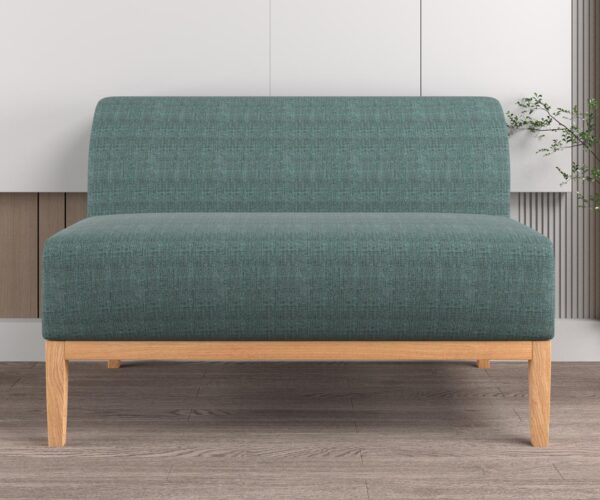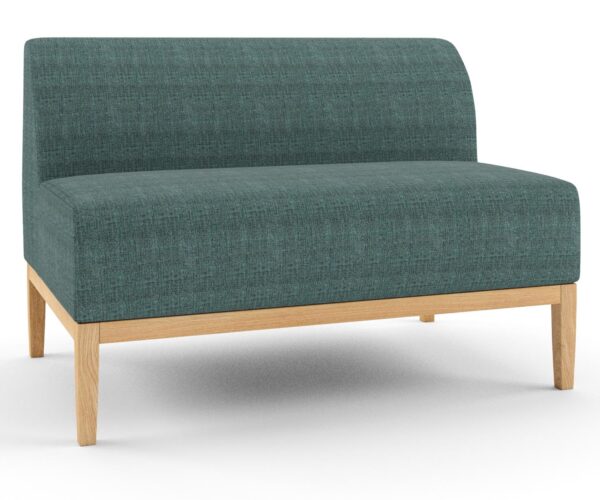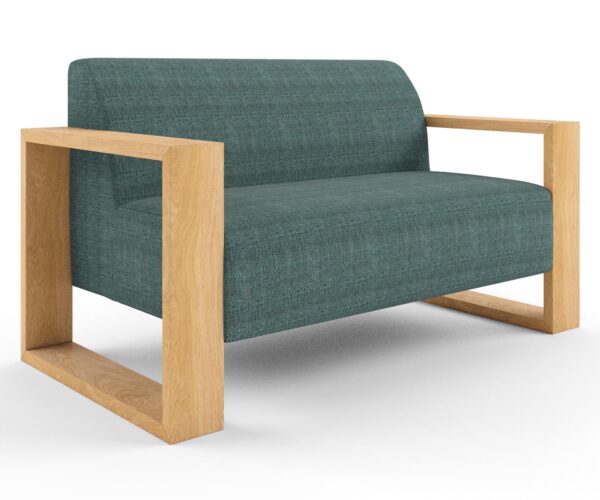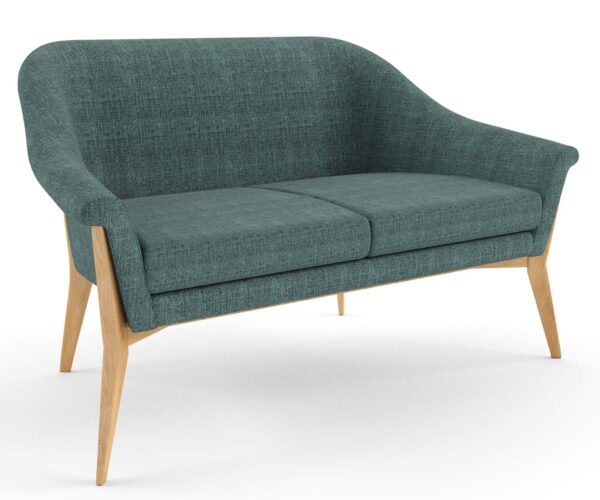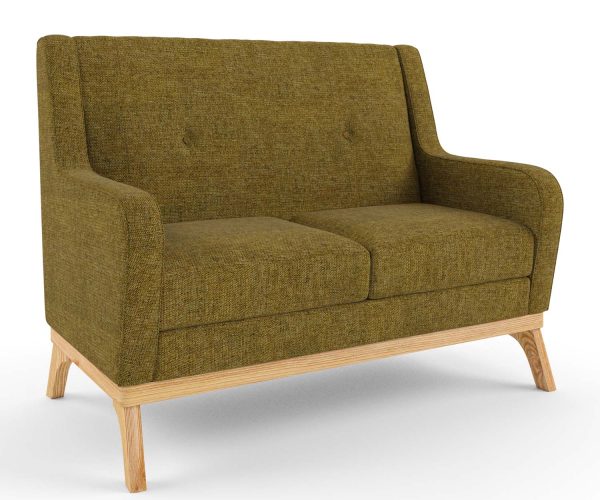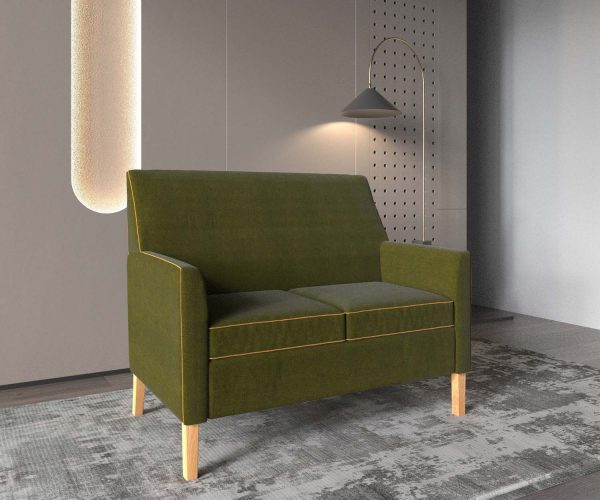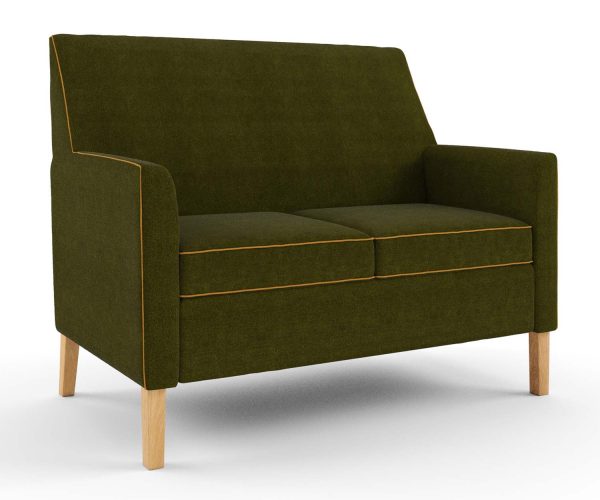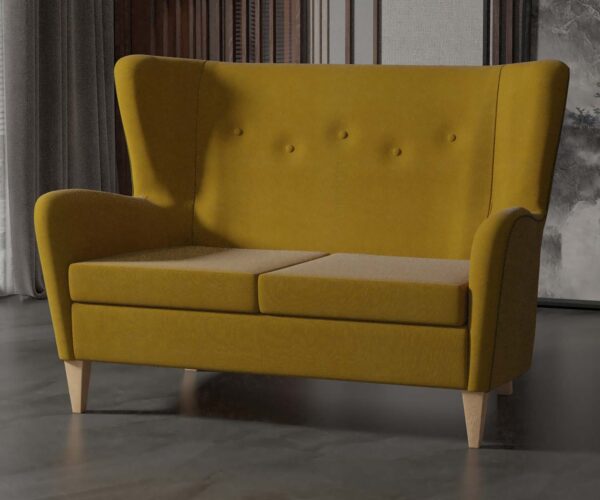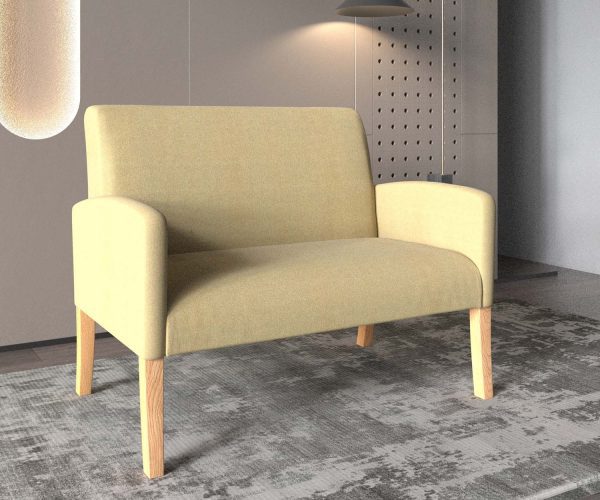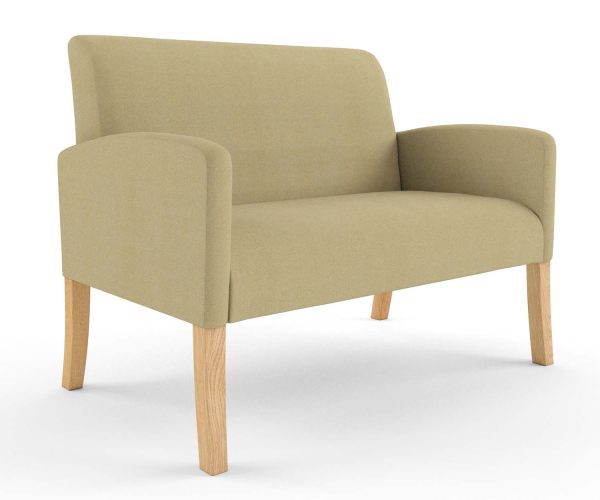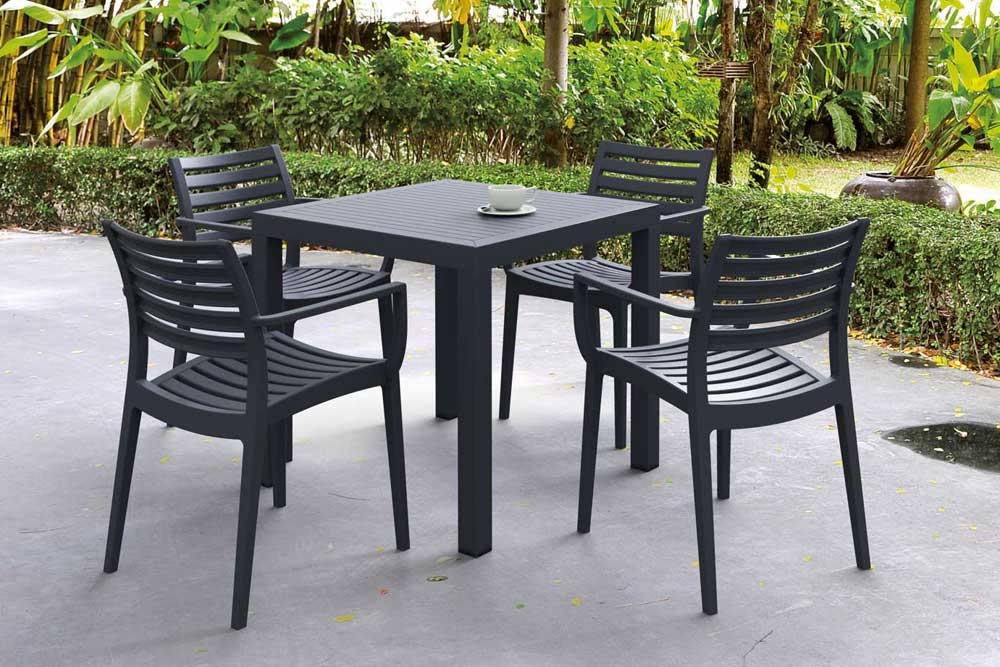5 Trends in Australian Aged Care Design: Improving Living Spaces for an Aging Population
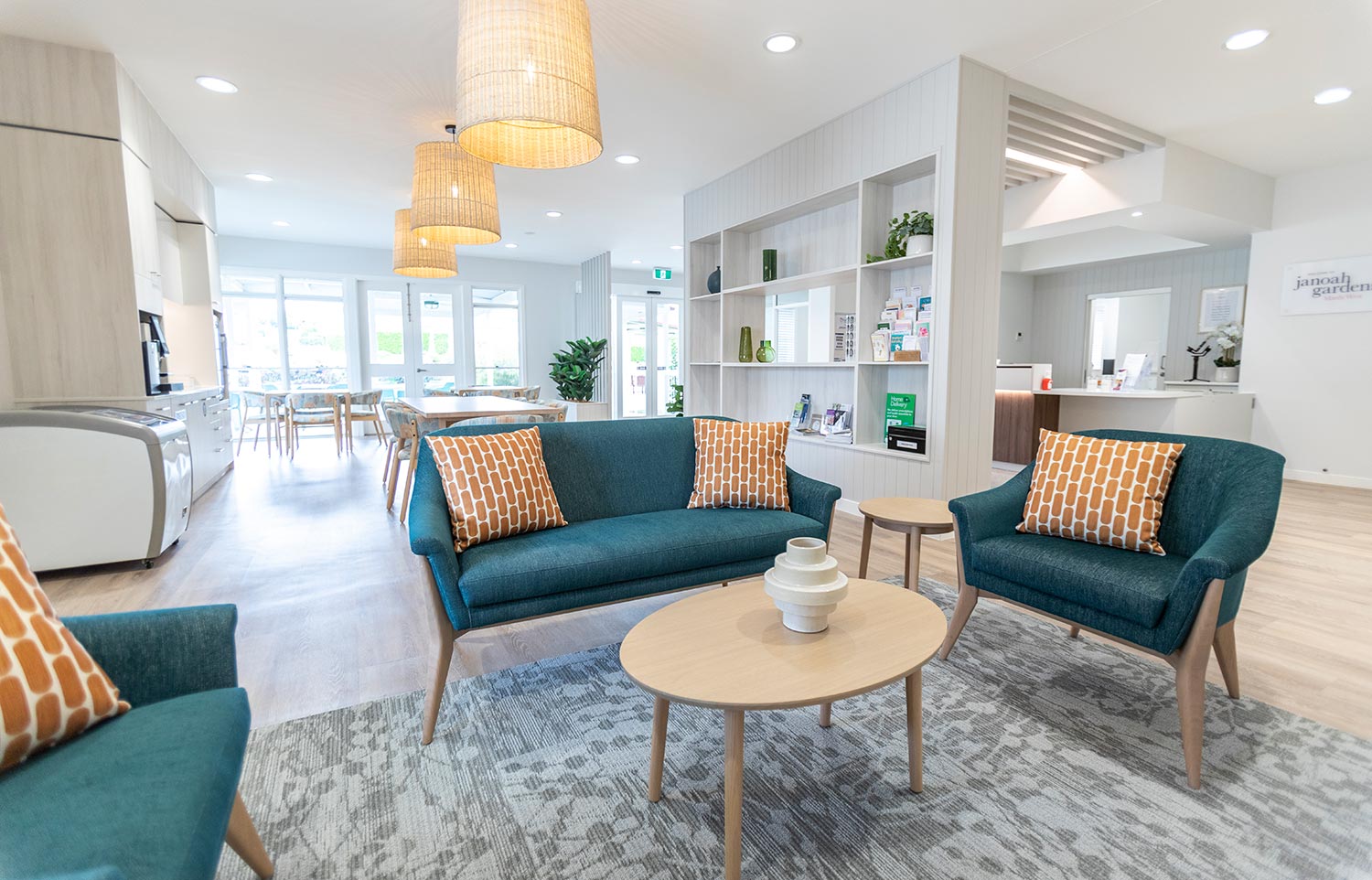
How aged care design is improving living spaces for Australia’s aging population
Aged care design: clinical, functional, dull, and dreary… right? A sea of vinyl, grey, and beige aged care furniture where the only consideration is how easy the furniture is to clean?
Not anymore!
By 2057, it is projected that 22% of the Australian population will be aged 65 years and over. As Baby Boomers are currently entering aged care facilities in significant numbers, there is a redefinition of aged care design and lifestyle quality. Residents now demand more beautiful and comfortable living environments, increased community and independent living options, greater low care alternatives, and more affordable accommodation.
This is also reflected in the Australian federal government’s Aged Care Quality Standards which recognize the importance of residents being treated with dignity and respect, with identity, culture, and diversity valued, and all residents being able to make informed choices about the care and services they receive.
It’s not just the residents who benefit from this shift in aged care design trends. Improved aged care living spaces also mean that the staff are proud of their working environment and family members enjoy visiting and therefore do it more often. Everyone wins.
Here are some of the emerging aged care design trends:
Designing for Dementia: creating spaces that are easy to understand and enhance way-finding.
An increasing number of aged care facilities are integrating dementia-specific spaces, tailoring interior design to meet the needs of residents with cognitive impairments. Those facing challenges in interpreting their surroundings can benefit from interior design strategies. Making doorways more obvious by enhancing contrast, avoiding busy patterns on carpets and wall coverings to improve the distinction between floors and walls, and incorporating landmarks can all aid in way-finding for these residents.
The behavioral impact of colour and textures, particularly in furniture upholstery fabrics, is also an important consideration for those living with dementia. Studies have shown that the simple act of touching velvet once a week improves verbal fluency in people with dementia. This is because it stimulates the pleasure centers of the brain. This translates to choosing softer textured upholstery fabrics for furniture used in aged care settings.
Furniture upholstery fabric should also have patterns that are easy to understand. If a pattern includes objects like flowers, it may cause a resident to pick at them in an attempt to touch or hold the object that they are looking at, causing frustration.
Designing for fall prevention: creating service environments that promote the safety and mobility of aged care residents.
It’s estimated that at least one-third of people aged 65 years and over fall one or more times a year. Interior designers on aged care projects must ensure their work promotes the safety and mobility of aged care residents. This is particularly crucial when it comes to fall prevention. This is vital to the health and well-being of residents because not doing so can reduce an elderly resident’s confidence which may limit their motivation to remain active.
The challenge in aged care design is to create a warm, home-like environment. This must be done while also incorporating aids such as handrails or sturdy furniture that will assist residents in moving around their homes.
Falls can occur from trip hazards, unexpected changes in elevation and compromised depth perception. Considering the lighting plan for an aged care facility can help to minimize falls risks, ensuring that there is an ideal ambiance in all areas throughout the day and night.
Interior designers may also like to consider ensuring that the flooring materials or material thickness used throughout a space are consistent. The use of a single flooring material throughout an entire facility may not be possible but ensuring that transitions are flush can improve the safety of residents.
Creating home-like spaces: creating comfortable aged care service environments for residents, their families and staff.
Elderly people have always lived their lives in family homes and moving to a large institution can be problematic if the space they are moving to is completely foreign to them. Continuity is the key and the best way to do this is to provide an aged care space that is homely and feels normal for them. For example, intimate lounge settings with furniture upholstery fabric featuring familiar colours and patterns contribute to a sense of home and independence. Cozy fireplaces and accessible facilities for all residents, including tea stations, dining rooms, and cinema rooms, further enhance this feeling.
Creating spaces that are non-clinical, with a residential feel will contribute to a decrease in disruptive behaviours that can sometimes occur with residents who live with dementia.
Building spaces to encourage community: creating spaces that help avoid social isolation, optimizing the health and wellbeing of aged care residents.
Many elderly people are at an increased risk of isolation and removal from social networks, including their own family.
Data from 2018 suggests that those over 75 are more likely to be lonely than any other age group and other research has found that living in a residential aged care facility can potentially contribute to these feelings of loneliness and social isolation (Neves, Sanders & Kokanović 2019).
This underscores the importance of aged care service environments accommodating family visitations and fostering intergenerational involvement beyond merely watching TV together. These environments should feature shared interior spaces that facilitate social interaction, encourage craft activities, and support games. Through promoting inclusion, aged care facilities play a role in mitigating the social isolation experienced by some elderly residents.
Supporting diversity within aged care: creating inclusive aged care spaces that meet the diverse needs of all residents.
With more than one-third of Australians aged over 65 being born overseas, diversity in aged care is becoming increasingly relevant to both aged care residents and those who care for them. Meeting the needs of older people means meeting the diverse needs of all older people. Diversity is more than just multiculturalism; it also includes gender, sexual orientation, religion, and social backgrounds.
Interior design strategies for aged care can go a long way to accommodate older people from diverse backgrounds. For example, colour symbolism within different cultures can influence choices for furniture upholstery fabrics and floor coverings. Service environments can be designed to accommodate different cultures, religious practices, daily routine rituals and lifestyles.
In Sydney, there is an Italian development with a communal kitchen where the Nonnas gather to make pasta and bake. For many cultures, there is a large focus on extended family and service environments can accommodate extended family by making spaces for socialization with them.
Service environments can also support lifestyles such as the LGBTIQA+ community. Research suggests that design for this demographic needs to feature shared communal spaces and encourage interaction between private and public spaces to help avoid isolation and encourage a feeling of community.
Aged care design: creating service environments that truly support the needs of Australia’s aging population
Aged care design has a significant impact on the well-being of all members of the aged care community; including residents, the staff who care for them and the families who visit them. Getting it right is about understanding the diverse needs of the population and being responsive, inclusive and sensitive to a person’s physical, cultural, language and spiritual needs.
Furniture is a key player in any interior design strategy and having a furniture solutions provider who understands your service environment is vital.
FAQs About Trends in Australian Aged Care Design
What are the current trends in Australian Aged Care Design?
Current trends in Australian Aged Care Design include a shift towards creating more homelike environments, incorporating dementia-friendly spaces, promoting intergenerational interaction, embracing sustainable and environmentally conscious designs, and integrating technology for improved resident care.
How is the design of aged care facilities evolving to meet the needs of diverse resident populations?
Aged care design is evolving to meet the needs of diverse resident populations by incorporating culturally sensitive elements, providing spaces that cater to various lifestyle preferences, and ensuring accessibility and inclusivity for residents with different levels of mobility and cognitive abilities.
Are there specific features in modern aged care design to address the well-being of residents?
Yes, modern aged care design prioritizes resident well-being by focusing on creating comfortable and aesthetically pleasing environments, incorporating natural light, promoting social interaction through communal spaces, and offering amenities that support physical and mental health.
How is technology being integrated into the design of Australian aged care facilities?
Technology is being integrated into the design of Australian aged care facilities through the incorporation of smart home systems, health monitoring devices, telehealth services, and communication tools to enhance resident safety, health outcomes, and overall quality of life.
What role does sustainability play in contemporary aged care design trends?
Sustainability is a significant consideration in contemporary aged care design trends. Facilities are adopting eco-friendly practices, energy-efficient designs, and using sustainable materials to create environmentally responsible living spaces.
How are Australian aged care facilities adapting to the preferences and expectations of the Baby Boomer generation?
Australian aged care facilities are adapting to the preferences of the Baby Boomer generation by offering more aesthetically pleasing and comfortable living spaces, providing a range of recreational and social activities, and incorporating technology to support the active and independent lifestyles of this demographic.
What are the key design elements that contribute to creating a dementia-friendly environment in aged care facilities?
Design elements for dementia-friendly environments include clear wayfinding signage, contrasting colors for improved visibility, minimized patterns to reduce confusion, safety features like handrails, and the incorporation of familiar and homelike spaces to enhance the well-being of residents with cognitive impairments.
How are communal spaces designed to encourage social interaction among aged care residents?
Communal spaces in aged care facilities are designed to encourage social interaction by providing comfortable seating arrangements, recreational areas, communal dining spaces, and organizing group activities and events to foster a sense of community and connection among residents.
Are there trends in incorporating nature and outdoor spaces in aged care design?
Yes, there is a trend towards incorporating nature and outdoor spaces in aged care design. Facilities are creating accessible gardens, courtyards, and outdoor seating areas to provide residents with opportunities for fresh air, sunlight, and a connection to nature.
How are Australian aged care facilities addressing the evolving expectations of residents and their families in terms of amenities and lifestyle options?
Australian aged care facilities are addressing evolving expectations by offering a diverse range of amenities, including cafes, fitness centers, art studios, and recreational spaces. They are also providing options for various lifestyle preferences, such as independent living, assisted living, and memory care services.
Some of our favourite sofas we make in our Australian workshop
More News
5 Trends in Australian Aged Care Design: Improving Living Spaces for an Aging Population

How aged care design is improving living spaces for Australia’s aging population
Aged care design: clinical, functional, dull, and dreary… right? A sea of vinyl, grey, and beige aged care furniture where the only consideration is how easy the furniture is to clean?
Not anymore!
By 2057, it is projected that 22% of the Australian population will be aged 65 years and over. As Baby Boomers are currently entering aged care facilities in significant numbers, there is a redefinition of aged care design and lifestyle quality. Residents now demand more beautiful and comfortable living environments, increased community and independent living options, greater low care alternatives, and more affordable accommodation.
This is also reflected in the Australian federal government’s Aged Care Quality Standards which recognize the importance of residents being treated with dignity and respect, with identity, culture, and diversity valued, and all residents being able to make informed choices about the care and services they receive.
It’s not just the residents who benefit from this shift in aged care design trends. Improved aged care living spaces also mean that the staff are proud of their working environment and family members enjoy visiting and therefore do it more often. Everyone wins.
Here are some of the emerging aged care design trends:
Designing for Dementia: creating spaces that are easy to understand and enhance way-finding.
An increasing number of aged care facilities are integrating dementia-specific spaces, tailoring interior design to meet the needs of residents with cognitive impairments. Those facing challenges in interpreting their surroundings can benefit from interior design strategies. Making doorways more obvious by enhancing contrast, avoiding busy patterns on carpets and wall coverings to improve the distinction between floors and walls, and incorporating landmarks can all aid in way-finding for these residents.
The behavioral impact of colour and textures, particularly in furniture upholstery fabrics, is also an important consideration for those living with dementia. Studies have shown that the simple act of touching velvet once a week improves verbal fluency in people with dementia. This is because it stimulates the pleasure centers of the brain. This translates to choosing softer textured upholstery fabrics for furniture used in aged care settings.
Furniture upholstery fabric should also have patterns that are easy to understand. If a pattern includes objects like flowers, it may cause a resident to pick at them in an attempt to touch or hold the object that they are looking at, causing frustration.
Designing for fall prevention: creating service environments that promote the safety and mobility of aged care residents.
It’s estimated that at least one-third of people aged 65 years and over fall one or more times a year. Interior designers on aged care projects must ensure their work promotes the safety and mobility of aged care residents. This is particularly crucial when it comes to fall prevention. This is vital to the health and well-being of residents because not doing so can reduce an elderly resident’s confidence which may limit their motivation to remain active.
The challenge in aged care design is to create a warm, home-like environment. This must be done while also incorporating aids such as handrails or sturdy furniture that will assist residents in moving around their homes.
Falls can occur from trip hazards, unexpected changes in elevation and compromised depth perception. Considering the lighting plan for an aged care facility can help to minimize falls risks, ensuring that there is an ideal ambiance in all areas throughout the day and night.
Interior designers may also like to consider ensuring that the flooring materials or material thickness used throughout a space are consistent. The use of a single flooring material throughout an entire facility may not be possible but ensuring that transitions are flush can improve the safety of residents.
Creating home-like spaces: creating comfortable aged care service environments for residents, their families and staff.
Elderly people have always lived their lives in family homes and moving to a large institution can be problematic if the space they are moving to is completely foreign to them. Continuity is the key and the best way to do this is to provide an aged care space that is homely and feels normal for them. For example, intimate lounge settings with furniture upholstery fabric featuring familiar colours and patterns contribute to a sense of home and independence. Cozy fireplaces and accessible facilities for all residents, including tea stations, dining rooms, and cinema rooms, further enhance this feeling.
Creating spaces that are non-clinical, with a residential feel will contribute to a decrease in disruptive behaviours that can sometimes occur with residents who live with dementia.
Building spaces to encourage community: creating spaces that help avoid social isolation, optimizing the health and wellbeing of aged care residents.
Many elderly people are at an increased risk of isolation and removal from social networks, including their own family.
Data from 2018 suggests that those over 75 are more likely to be lonely than any other age group and other research has found that living in a residential aged care facility can potentially contribute to these feelings of loneliness and social isolation (Neves, Sanders & Kokanović 2019).
This underscores the importance of aged care service environments accommodating family visitations and fostering intergenerational involvement beyond merely watching TV together. These environments should feature shared interior spaces that facilitate social interaction, encourage craft activities, and support games. Through promoting inclusion, aged care facilities play a role in mitigating the social isolation experienced by some elderly residents.
Supporting diversity within aged care: creating inclusive aged care spaces that meet the diverse needs of all residents.
With more than one-third of Australians aged over 65 being born overseas, diversity in aged care is becoming increasingly relevant to both aged care residents and those who care for them. Meeting the needs of older people means meeting the diverse needs of all older people. Diversity is more than just multiculturalism; it also includes gender, sexual orientation, religion, and social backgrounds.
Interior design strategies for aged care can go a long way to accommodate older people from diverse backgrounds. For example, colour symbolism within different cultures can influence choices for furniture upholstery fabrics and floor coverings. Service environments can be designed to accommodate different cultures, religious practices, daily routine rituals and lifestyles.
In Sydney, there is an Italian development with a communal kitchen where the Nonnas gather to make pasta and bake. For many cultures, there is a large focus on extended family and service environments can accommodate extended family by making spaces for socialization with them.
Service environments can also support lifestyles such as the LGBTIQA+ community. Research suggests that design for this demographic needs to feature shared communal spaces and encourage interaction between private and public spaces to help avoid isolation and encourage a feeling of community.
Aged care design: creating service environments that truly support the needs of Australia’s aging population
Aged care design has a significant impact on the well-being of all members of the aged care community; including residents, the staff who care for them and the families who visit them. Getting it right is about understanding the diverse needs of the population and being responsive, inclusive and sensitive to a person’s physical, cultural, language and spiritual needs.
Furniture is a key player in any interior design strategy and having a furniture solutions provider who understands your service environment is vital.
FAQs About Trends in Australian Aged Care Design
What are the current trends in Australian Aged Care Design?
Current trends in Australian Aged Care Design include a shift towards creating more homelike environments, incorporating dementia-friendly spaces, promoting intergenerational interaction, embracing sustainable and environmentally conscious designs, and integrating technology for improved resident care.
How is the design of aged care facilities evolving to meet the needs of diverse resident populations?
Aged care design is evolving to meet the needs of diverse resident populations by incorporating culturally sensitive elements, providing spaces that cater to various lifestyle preferences, and ensuring accessibility and inclusivity for residents with different levels of mobility and cognitive abilities.
Are there specific features in modern aged care design to address the well-being of residents?
Yes, modern aged care design prioritizes resident well-being by focusing on creating comfortable and aesthetically pleasing environments, incorporating natural light, promoting social interaction through communal spaces, and offering amenities that support physical and mental health.
How is technology being integrated into the design of Australian aged care facilities?
Technology is being integrated into the design of Australian aged care facilities through the incorporation of smart home systems, health monitoring devices, telehealth services, and communication tools to enhance resident safety, health outcomes, and overall quality of life.
What role does sustainability play in contemporary aged care design trends?
Sustainability is a significant consideration in contemporary aged care design trends. Facilities are adopting eco-friendly practices, energy-efficient designs, and using sustainable materials to create environmentally responsible living spaces.
How are Australian aged care facilities adapting to the preferences and expectations of the Baby Boomer generation?
Australian aged care facilities are adapting to the preferences of the Baby Boomer generation by offering more aesthetically pleasing and comfortable living spaces, providing a range of recreational and social activities, and incorporating technology to support the active and independent lifestyles of this demographic.
What are the key design elements that contribute to creating a dementia-friendly environment in aged care facilities?
Design elements for dementia-friendly environments include clear wayfinding signage, contrasting colors for improved visibility, minimized patterns to reduce confusion, safety features like handrails, and the incorporation of familiar and homelike spaces to enhance the well-being of residents with cognitive impairments.
How are communal spaces designed to encourage social interaction among aged care residents?
Communal spaces in aged care facilities are designed to encourage social interaction by providing comfortable seating arrangements, recreational areas, communal dining spaces, and organizing group activities and events to foster a sense of community and connection among residents.
Are there trends in incorporating nature and outdoor spaces in aged care design?
Yes, there is a trend towards incorporating nature and outdoor spaces in aged care design. Facilities are creating accessible gardens, courtyards, and outdoor seating areas to provide residents with opportunities for fresh air, sunlight, and a connection to nature.
How are Australian aged care facilities addressing the evolving expectations of residents and their families in terms of amenities and lifestyle options?
Australian aged care facilities are addressing evolving expectations by offering a diverse range of amenities, including cafes, fitness centers, art studios, and recreational spaces. They are also providing options for various lifestyle preferences, such as independent living, assisted living, and memory care services.
Some of our favourite sofas we make in our Australian workshop
Commercial furniture by room
Based in Brisbane, we’re an Australian manufacturer of aged care furniture, retirement living furniture, hospital & healthcare furniture, hotel & accommodation furniture and student accommodation furniture. We also supply a range of commercial office furniture.
Discover the FHG Look Book: Your Source of Inspiration for Quality Australian-Made Commercial Furniture
- Quality Craftsmanship: See why we’ve been a trusted partner for over 25 years.
- Local Excellence: Learn how our Brisbane team ensures the highest standards.
- Inspiration and Ideas: Find innovative furniture solutions for any environment.
Don’t miss the opportunity to transform your commercial space with FHG’s expertly crafted furniture. Download the FHG Look Book today and start your journey towards exceptional design and quality.

